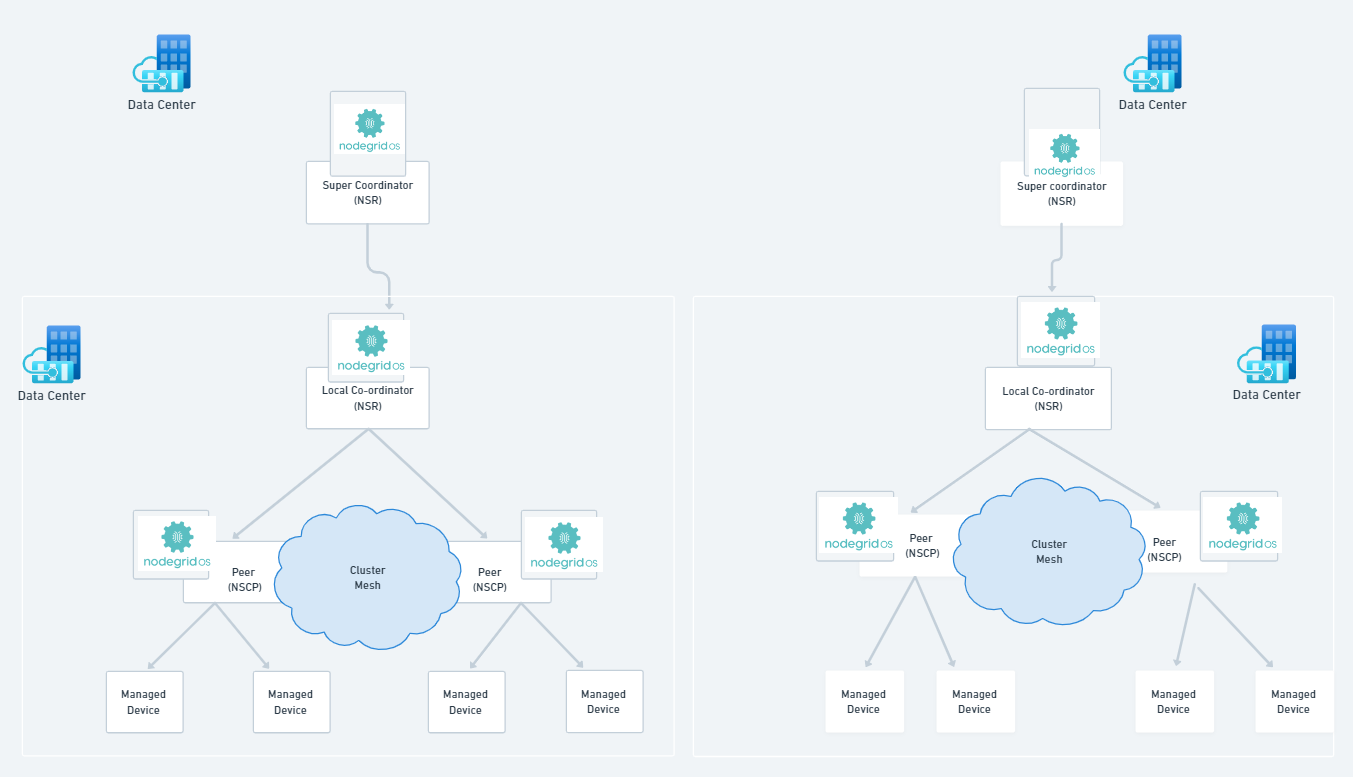To understand how to set up an IMI architecture for a production environment, consider this sample architecture for a hyperscale data center. This example includes two data centers, each equipped with a local coordinator. The local coordinator, an NSR, manages the peers within its site and can support up to 50 peers. NSCP devices act as peers, each capable of managing up to 96 devices.
These devices are connected to a super coordinator located in a different data center. The setup includes two super coordinators, with only one active at any given time to ensure redundancy. This supercluster setup consists of Nodegrid devices deployed in a mesh topology, ensuring high availability and redundancy.
The infrastructure includes both local and remote components connected through various network interfaces, such as fiber and LTE/5G. Below is a pictorial representation of the sample IMI architecture:

Consider Network Paths
Establishing reliable network paths is fundamental to ensuring that all components within the IMI can communicate effectively. Network paths should be meticulously planned to avoid single points of failure and ensure consistent communication.
Define primary and secondary routes for each Nodegrid device.
Configure network interfaces for each connection to ensure redundancy.
Define Network Paths for Reliable Communication
To maintain a resilient IMI, it is essential to define clear and reliable network paths. This involves identifying primary and secondary routes for data to travel between nodes, ensuring that if one path fails, another can seamlessly take over.
Configure primary network connections (e.g., ETH0) for each Nodegrid device.
Set up secondary connections (e.g., LTE) as backups.
Ensure that each connection has its own IP address and configuration.
Define Redundancy and Failover Mechanisms
Redundancy and failover mechanisms are crucial for maintaining network integrity. By configuring multiple network connections and establishing automatic failover protocols, IMI can continue to operate smoothly even when individual components or connections fail.
Enable network failover settings on each Nodegrid device.
Set primary and secondary connections, specifying failover protocols.
Ensure that failover mechanisms are tested and functional.
Verify Path Configurations
Once the network paths and failover mechanisms are configured, it is essential to verify that they function correctly. This involves testing each path and failover scenario to ensure the IMI operates as intended under all conditions.
Conduct simulated failure tests to verify automatic failover.
Monitor network performance to ensure optimal operation.
Regularly test and update failover configurations as needed.
Integrating these elements into the IMI setup allows you to create a resilient and reliable management infrastructure that ensures continuous operation and robust network management.